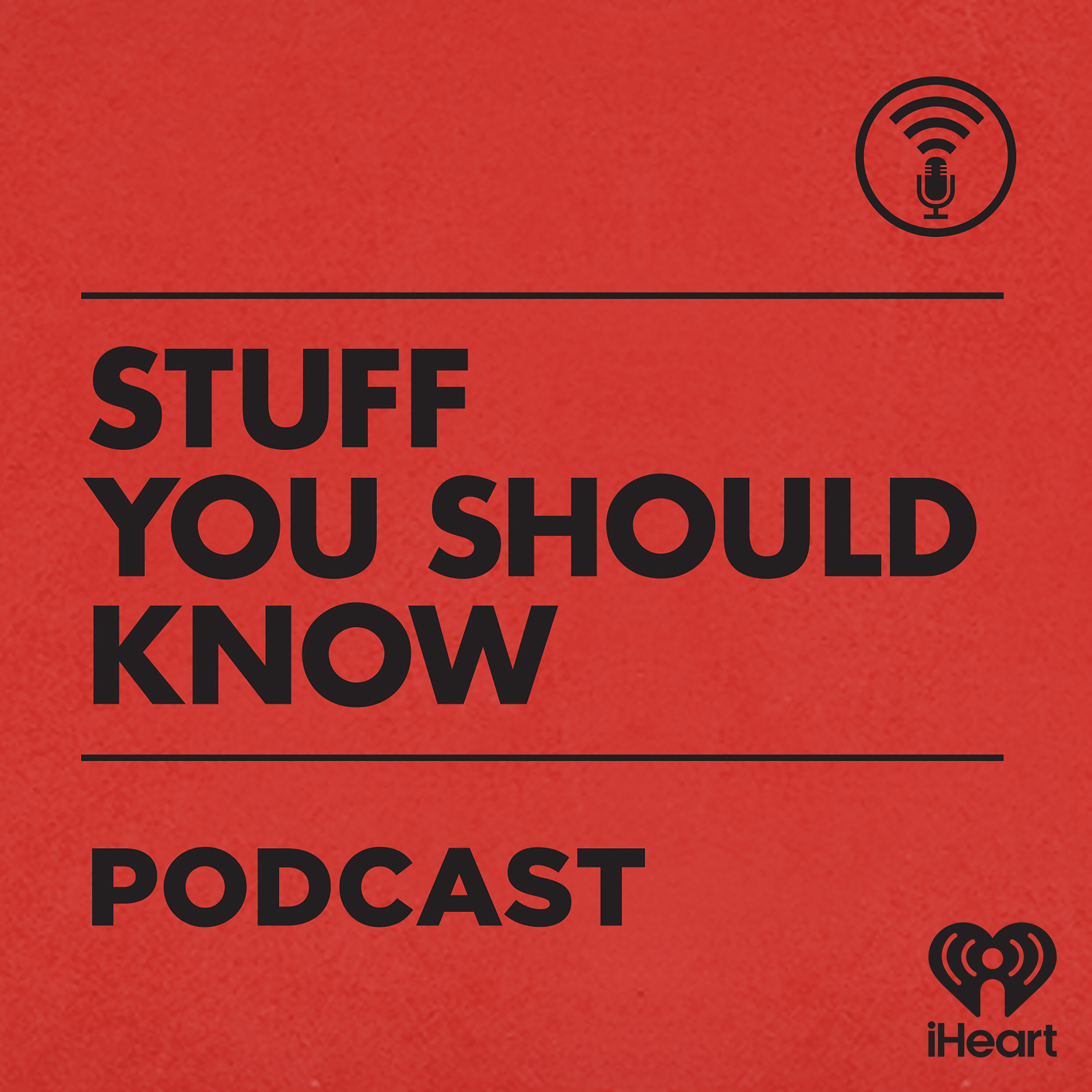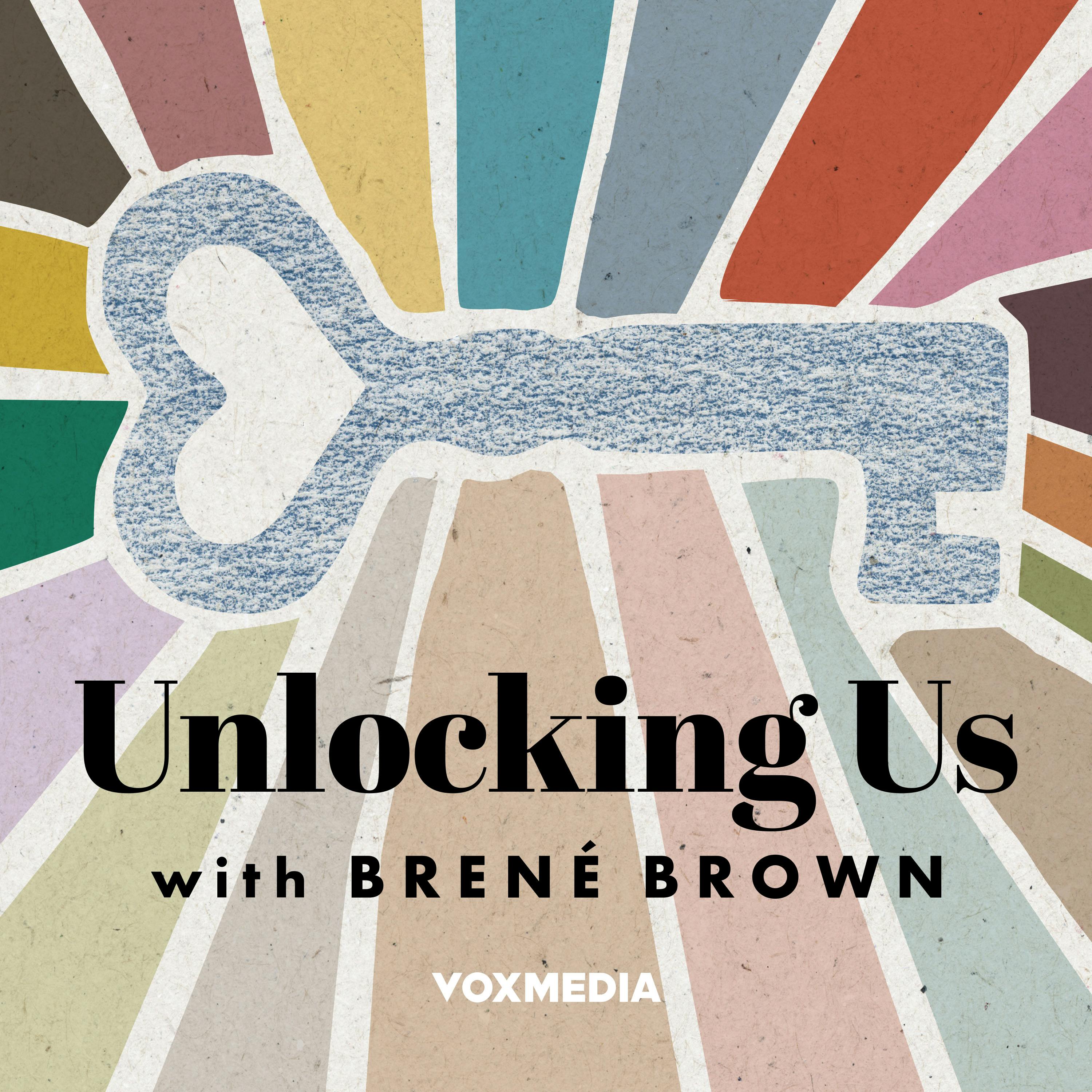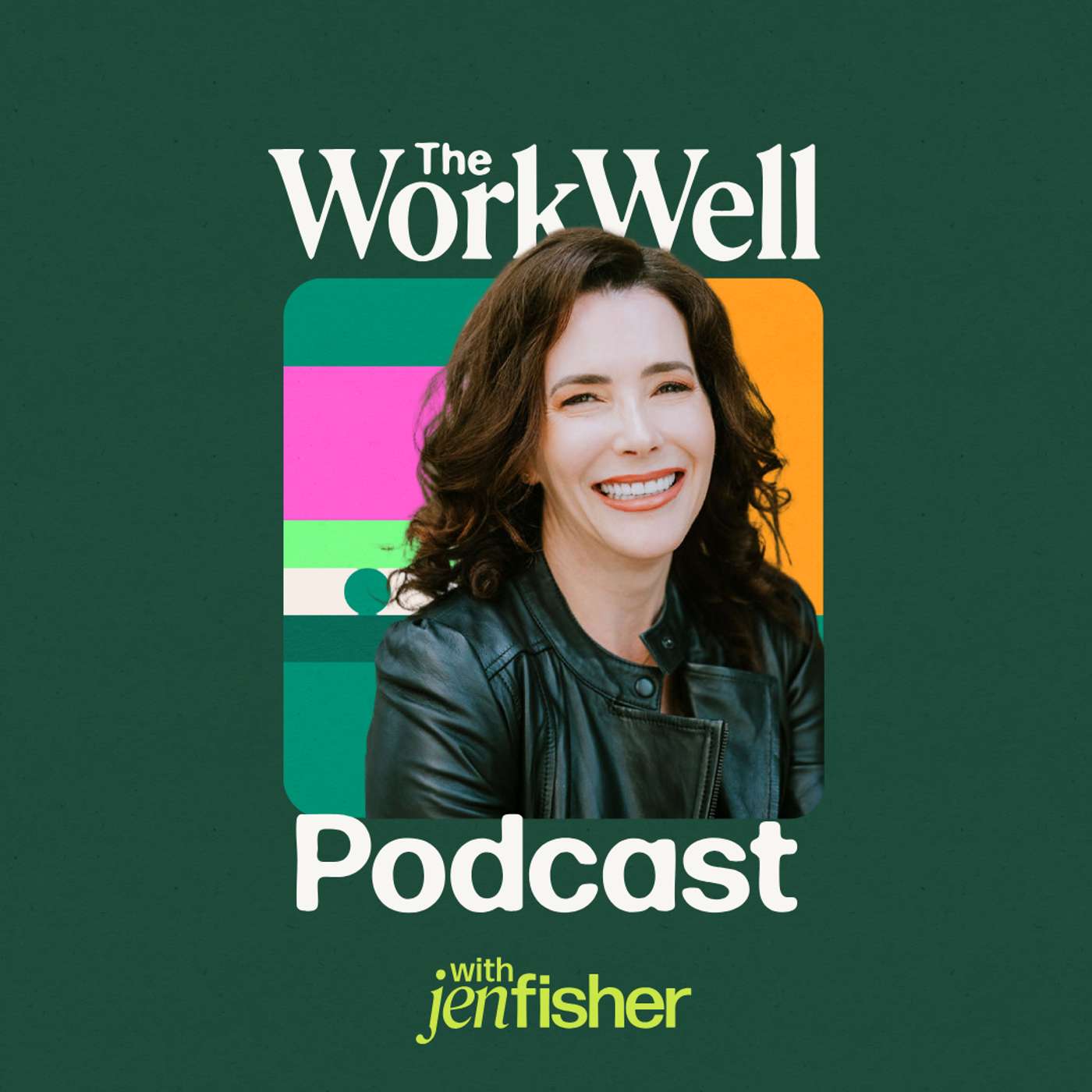
The Balanced Badass Podcast®
The Balanced Badass Podcast® is the show for high-achieving professionals who want to prevent burnout, master work-life balance, and stay badass without losing their sanity.
Each episode, we’re not just tackling your overflowing calendar and keeping your household on track; we’re getting into burnout prevention and recovery strategies so that you have time to breathe, laugh, and savor that much-needed glass of wine at the end of the day.
Think of this podcast as your regular dose of practical advice, a touch of humor, and a little tough love, like catching up with a friend who just gets it. Whether you’re navigating burnout, balancing meetings and meal prep, or carving out moments of self-care, this is the space where we figure it out together.
Disclaimer: My content is for educational purposes only and not a substitute for professional medical or mental health advice. For serious concerns, please consult a qualified provider.
The Balanced Badass Podcast®
Leading from the Middle: Why It's the Hardest Job in the Building
Being a middle manager is tough. You’re stuck between the bosses and your team, trying to keep everyone happy while handling a lot of pressure.
In this episode, we talk about why leading from the middle is so hard, what causes burnout, and why middle managers are so important to every company.
If you’ve ever felt overwhelmed at work or like your efforts go unnoticed, this episode is for you.
Check out the detailed show notes (https://tarakermiet.com/podcast/) and leave your thoughts or questions about today's topic.
Got something to say? Text me!
-----
I’m Tara Kermiet, a leadership coach, burnout strategist, and host of The Balanced Badass Podcast®. I help high-achievers and corporate leaders design careers that are successful and sustainable.
Here, you’ll find tactical tools, leadership lessons, and burnout education that just makes sense.
👉 Start by taking my free Burnout Drivers Mini Assessment
😍 Join my community on Instagram (@TaraKermiet) and/or TikTok (@TaraKermiet) so we can stay connected!
🎤 Got a question, a topic you want me to cover, or just want to share your thoughts? I'd love to hear from you! Send me a DM or email.
Stay balanced, stay badass, and make good choices!
Disclaimer: My content is for educational purposes only and not a substitute for professional medical or mental health advice. For serious concerns, please consult a qualified provider.
[00:00:00] What is up Party people? Welcome back to the Balanced Badass Podcast. Can you believe that we're already at season four? That's wild to me. If you're a regular listener, you probably noticed that I ghosted you the last few weeks, and I do apologize for that. But I did come down with a nasty cold, and honestly, I felt like death warmed over, so I figured also talking into a mic while sounding like a congested toe, just.
Didn't feel like the vibe I was going for. So we're picking back up here in season four and today we're talking about why leading from the middle is hands down the hardest job in the building. Now I want you to think about the workplace like a sandwich, the top slice, the executives, they get all the high level attention, strategy, offsites, personal coaches, and those big fat bonuses.
Then you've got the bottom slice, the front line. They get the programs designed to [00:01:00] keep them engaged. Wellness perks, appreciation days, and even those free donut Fridays. And then there's the filling the middle, that's you, the glue that holds the whole thing together. The ones translating strategy into actual work, keeping teams motivated, managing the shit storm when priorities change and smoothing over the mess when things fall apart.
But you're also the ones getting squeezed hardest between those two layers. In fact, McKinsey reports that half of middle managers show signs of burnout. While Gallup data tells us managers drive 70% of employee engagement, but are simultaneously the group with the lowest engagement themselves. So in other words, you're working twice as hard for recognition that rarely comes.
So today we're going to unpack why this happens and what organizations and leaders can do differently to build workplaces where the middle doesn't get sacrificed in the process. Now, middle leadership isn't [00:02:00] just a little busy. It's often the epitome of a no win position. You're constantly being asked to play roles that contradict each other, and that tug of war wears you down faster than any workload actually could.
On one hand, you're the enforcer, so you're handing down policies, you're making sure your team hits their targets, and you're delivering the tough feedback that nobody wants to hear. But then on the other hand, you're also supposed to be the empath, the supportive coach, the cheerleader, and the one who's always available with an open door and a listening ear.
And those two roles don't exactly play nice together. Then there's the translator versus filter paradox. Executives hand you some big shiny strategy usually wrapped in buzzwords like synergy or innovation pipeline, and it's your job to turn that into a daily to-do list that your team understands and can actually execute, which means you are filtering out all the unnecessary BS so your [00:03:00] team doesn't roll their eyes and go into mutiny while also trying not to strip so much away that the execs accuse you of being off message.
And we can't forget about the advocate versus shield dynamic you're supposed to advocate for your team's needs. Push back when workloads are unsustainable and lobby for resources, but at the exact same time, you're expected to shield your team from bad news, corporate chaos, and unrealistic expectations.
Translation, you absorb the blows from above while also trying to keep morale afloat below. And psychologists actually have a name for this. It's called role conflict. It's the fact that your job is asking you to be two opposing things at once, and this is exactly what I talk about in my five C's driving burnout framework for middle managers.
Culture and convictions are the two that slam into each other the hardest. The culture says to deliver the strategy with no excuses. [00:04:00] Your convictions say to protect your people and leave with integrity. And then being caught in the crossfire of those two drivers is exhausting. And the sad thing is that most organizations don't even see it.
They just keep layering on new initiatives, new scorecards, and new quick wins. And then it's the middle layer who's expected to magically make it all happen. No wonder burnout is so high in this group. Now, it's not just that this shit is hard. It is, but it also chips away at you psychologically in ways most people don't see.
When you're constantly pushing ideas up the chain and they get ignored, or you advocate for your team and leadership shuts it down, you eventually stop trying. That's what psychologists call learned futility. It's not that you don't care. It's actually that caring starts to feel like banging your head against a brick wall.
Over time, that sense of why bother can turn into [00:05:00] cynicism, which is one of the clearest signs of burnout. And then there's the cognitive load. Middle leaders are the ultimate context switchers. One minute you're in a strategic planning session. The next you're handling a client fire, then you're doing a performance review.
And before lunch, you've had to answer three quick questions about PTO. The American Psychological Association has shown that constant context, switching like this increases error rates by as much as 40% and drains your brain's working memory. So in other words, it's not just feeling harder to focus, it literally is harder for your brain to function over time.
All of this shit starts to wear on your sense of self-worth burnout convinces you that it's all your fault, instead of recognizing the system is a. Unsustainable. You start believing that you are the problem. You think Maybe I'm not cut out for leadership, maybe I've just lost my edge. Maybe I'm just not good enough.
And that's what I [00:06:00] call identity erosion Burnout rewrites the story that you tell yourself about your competence and your worth, and it's devastating because it makes you less likely to speak up, less likely to set boundaries, and more likely to just suffer in silence. And I don't know about you, but when I was in that space, it was terrifying.
I was working harder than ever. Yet I felt less effective every day, and I didn't recognize myself anymore. That disconnect between effort and impact is one of the most demoralizing experiences a leader can have. This is why I hammer so hard on the point that burnout is not a personal weakness. It's an occupational hazard, and for middle leaders, it's practically built into the role, and as if that all wasn't enough, let's layer on the stuff that nobody talks about.
The invisible work that so many middle leaders, especially women and underrepresented folks, end up carrying. [00:07:00] I'm talking about what Catalyst calls office housework. This is like the mentoring, the team building, the DEI committee work, the culture repair projects. Basically all the things that keep an organization humane, but don't get measured in your performance review or aren't tied to your bonus.
And guess who ends up taking on the bulk of it? Women, people of color, and folks from underrepresented backgrounds. Why? Because they're expected to, because they're often good at it. And because the organization quietly relies on them to patch the culture, while executives pat themselves on the back about being people first, this is where the burnout risk gets compounded.
Not only are you already playing those paradox roles, but now you're also carrying work that's invisible, unpaid, and unacknowledged, and that invisible labor often hurts your career advancement. I wanna go back to Catalyst again because they found that [00:08:00] leaders who spend more time on this office, housework, actually get passed over for promotions more often because their contributions don't look like bottom line impact.
They look and appear to be extra. But here's the irony on that. While the system is busy undervaluing you, the reality is that you're the most critical layer in the whole organization. You are not extra. You're essential. If you think about it, middle leaders are the glue. You're the bridge between strategy and execution, between executives and employees, and between vision and reality.
In ecology, there's this concept of a keystone species. The species that holds an ecosystem in balance, if you remove it and everything else then starts to collapse. And in organizations that keystone rule belongs to the middle, and the numbers actually back this up. I mean, I already mentioned here that Gallup found that, you know, managers account for 70% of the variance on employee [00:09:00] engagement.
Well, Deloitte has also reported that companies with strong middle leadership see 30% higher retention and 23% higher profitability. Now, that's not a small amount. And then you add on here, Edelman's Trust Barometer shows that employees trust their direct manager more than they trust the CEO or the company itself.
So let's connect the dots on this. Middle leaders are being undervalued and burned out, but they're also the single most important factor in whether a workplace thrives or falls apart. That's essentially organizational malpractice. And like any malpractice, it comes with consequences, and they could be pretty big ones.
When companies neglect their middle leaders, they don't just risk a few bad surveys or a little grumbling on Glassdoor. They're bleeding money, talent, and trust, and often without even realizing it, Gallup estimates disengaged managers cost us companies [00:10:00] between 77 and $96 billion every single year because disengagement is contagious.
So when a manager checks out, the team checks out, productivity drops, turnover spikes, and that ripple effect touches every corner of the business. And middle managers are usually the first to go during restructures or layoffs because they've had enough, they've got the transferable skills, and they know that they're marketable elsewhere.
So they're tired of being treated like shit. So they're gonna go, and when they leave, it's not just one resignation, it's the unraveling of institutional knowledge and the trust that holds teams together. So in other words, neglecting the middle doesn't save you a damn thing. It actually sets your organization up for bigger losses and risk down the line.
It's a slow drain on performance culture and on the very backbone of the workplace, which begs the question, if the middle matters this [00:11:00] much, what needs to change? And here's where I get fired up, because the answer is not another resilience webinar my friend. Middle leaders don't need more training, more yoga, more self-care challenges, or yet another reminder to figure out how to manage their eight back to back, back-to-back meetings.
What they need is for the system to stop setting them up to fail, and the research is clear on where to start. Okay, first span of control matters. Gartner recommends fewer than seven direct reports per manager for sustainable effectiveness, but I see in my work, middle leaders with 12, 15, sometimes even 20 plus people that they're supposed to manage on top of everything else that they're doing.
That's a disaster waiting to happen. Second decision rights matter. McKinsey found that organizations with clear accountability around who actually owns decisions [00:12:00] are three times more likely to report strong organizational health. Yet middle leaders are often put in situations where they're responsible for outcomes without the authority to actually make any calls.
That's a recipe for frustration and disengagement. And third peer networks matter. The Center for Creative Leadership has shown over and over again that peer support is one of the strongest predictors of sustained leadership performance. But middle managers are some of the most isolated folks in the workplace.
Executives have cohorts and offsites, frontline staff have team bonds, but for middle leaders, it's often every person fending for themselves. So if organizations really wanna reduce burnout and boost performance, they have to stop looking at middle managers as a stepping stone and start seeing them as a strategic asset.
That means redesigning roles, redistributing workloads, and building actual support [00:13:00] systems around them. When you take care of your middle leaders, you take care of everyone. At the end of the day, middle leadership isn't going away. If anything, it's becoming more and more important. We've got hybrid work, turn to office, rapid change, tighter budgets.
And who do you think is carrying the brunt of all of that? The middle. If organizations can finally get this right, they can unlock the kind of culture that every CEO says they want, but can never quite create. Because think about it. Who actually shapes whether employees feel seen? Who sets the tone for whether change feels like chaos or progress? Who builds or breaks trust on a daily basis?
I'll tell you one thing. It's not the execs on stage at the all hands. So maybe the real leadership revolution doesn't start with the top. Maybe it starts right here in the middle with the people holding it all together every single day. If [00:14:00] you're in that position, here's my challenge to you. Stop waiting for permission to lead differently.
You might not be able to change the entire system overnight, but you can change how you run your team, how you guard your capacity, how you model boundaries, and how you build trust in your corner of the building. And when enough middle leaders do that, the ripple effect is undeniable. And if you're in senior leadership listening to this, look at how you're resourcing your middle layer, are you giving them clarity, authority, and actual support?
Or are you just piling on pressure and hoping that they don't crack because the future of your workplace depends on how you answer those two questions. This is a wake up call and honestly, an invitation. The middle doesn't have to stay the hardest job in the building. With the right shifts, it could become the most powerful one.
And that's all I've got for you today. As always, thanks for tuning in. Thanks for being here, and thanks for being a part of [00:15:00] this community. I'll be back next week with more, but until then, take care of yourselves and make good choices. Okay.
Podcasts we love
Check out these other fine podcasts recommended by us, not an algorithm.

Happier with Gretchen Rubin
Gretchen Rubin / The Onward Project
The Gratitude Attitude Podcast
thegratitudeattitudepodcast
Before Breakfast
iHeartPodcasts
A Bit of Optimism
Simon Sinek
Oprah's Super Soul
Oprah
Stuff You Should Know
iHeartPodcasts
Unlocking Us with Brené Brown
Vox Media Podcast Network
We Can Do Hard Things
Treat Media and Glennon Doyle
Take Out Therapy: End Overthinking & Overwhelm for Empathic High Achievers
Rebecca Hunter, MSW
FRIED. The Burnout Podcast
Cait Donovan
